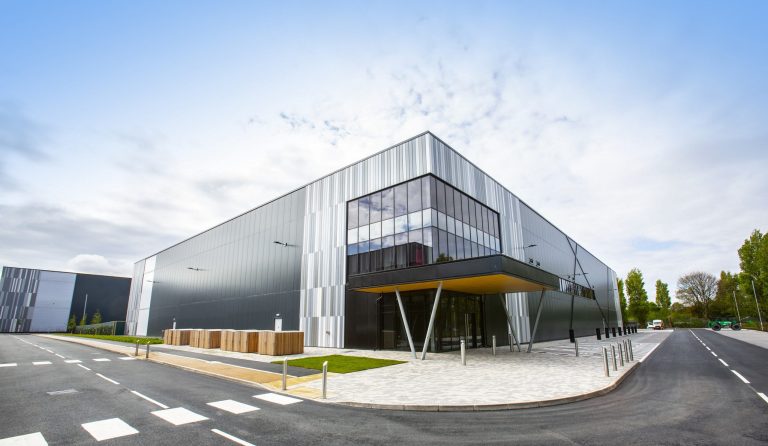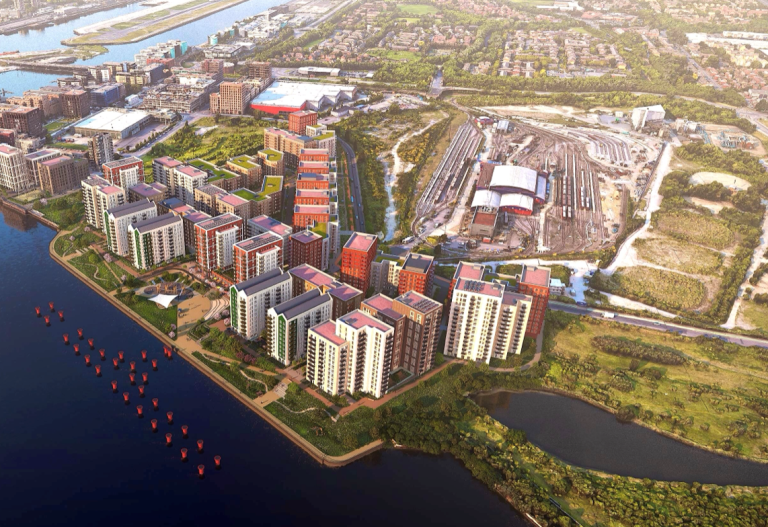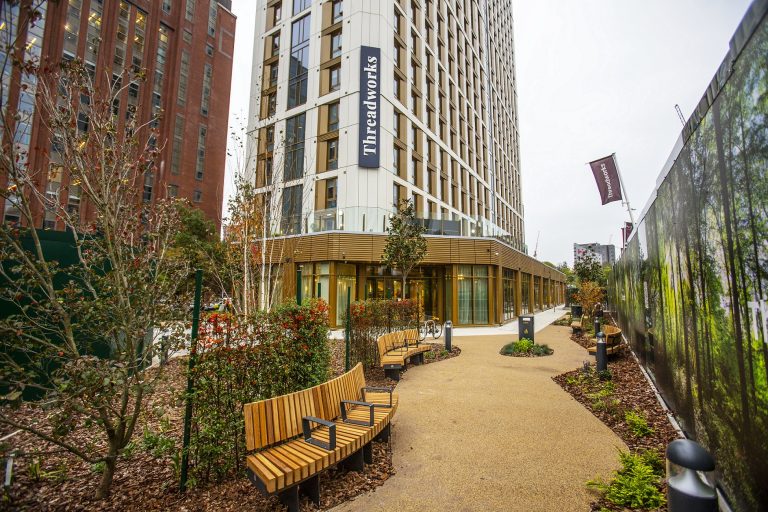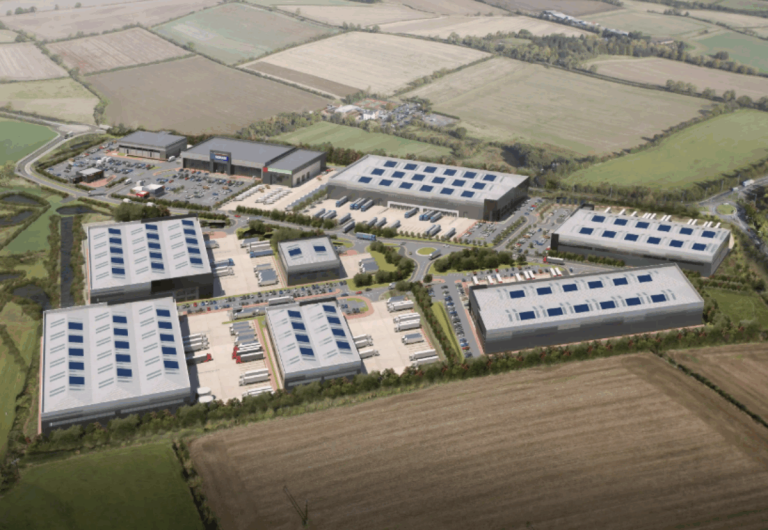Winvic Construction Ltd, a leading main contractor that specialises in the design and delivery of private and public sector construction and civil engineering projects, has completed the 350,000 sq. ft first phase of logistics hub Atlantic Park in Bootle, Liverpool. Atlantic Park is a 52-acre site, formerly home to Rolls Royce Engineering works, which sits within the Port of Liverpool Freeport zone and will boast a total of 800,000 sq. ft of high-quality industrial space when complete. Delivered on behalf of Royal London Asset Management (RLAM) Property, Winvic has designed and built four units of flexible and sustainable logistics and manufacturing space – sized at 40,000 sq. ft, 50,000 sq. ft, 110,000 sq. ft and 125,000 sq. ft. The development has been designed in accordance with RLAM Sustainability Strategy, which aims for new build property developments to achieve Net Zero in operation by 2030. With haunch heights of 12.5 metres large service yards, and two-storey office spaces, the units are designed to meet the evolving needs of occupiers and investors. The first phase also included the installation of new services, separate concrete service yards, an access road and all hard and soft landscaping, with 20 per cent of the parking spaces having EV charging points. BREEAM Excellent and an EPC A rating has been achieved on the project and a 10 per cent biodiversity net gain; with bird, bat and insect nest boxes installed. With the successful completion of the first phase, RLAM has appointed Winvic to deliver the 420,000 sq. ft second phase, with the contractor having commenced the 50-week build programme back in July. Phase two will bring three further units to Atlantic Park with floor spaces ranging from 53,750 to 216,000 sq. ft. As with phase one, the units will feature two-storey office spaces, service yards and car parking with EV charging bays. Completion is expected in summer 2026. Winvic is delivering the second phase as Net Zero Carbon in Construction, employing its tried and tested Life Cycle Assessment (LCA) process, which is aligned with the Royal Institution of Chartered Surveyors (RICS) Whole Life Carbon Assessment, the UK Green Building Council (UKGBC), and the zero carbon network London Energy Transformation Initiative (LETI), as well as independently third-party verified. In line with Winvic’s commitment to leaving a positive legacy in communities local to its projects, the contractor has developed an Employment and Skills Plan and will work closely with Sefton at Work, Invest Sefton and supply chain partners to match employment and training opportunities for local people, and collaborate with local education providers to offer career talks and work experience placements to students. Danny Nelson, Managing Director of Industrial, Distribution and Logistics at Winvic, said: “We are pleased to be working once again with RLAM to deliver the second phase of this impressive scheme in the Northwest and are proud to be appointed based on our high-quality delivery in phase one. “With industry-leading credentials, Winvic worked collaboratively with RLAM to meet ambitious sustainability and social value goals for the first phase – and this will continue in phase two as we work to deliver Net Zero in construction. “Atlantic Park is bringing in-demand state-of-the-art facilities and supporting regional growth through job creation and training opportunities and Winvic is proud to be the construction partner.” Tenants signing on to Atlantic Park will benefit from its prime location; being 1.3 miles from M57 and M58 motorways, 2 miles from the Port of Liverpool Freeport, and 4.5 miles from Liverpool, providing excellent connectivity for national and international logistics operations. Matt Barnes, Senior Asset Manager at Royal London Asset Management, added: “Atlantic Park is a future-ready logistics hub, which is strategically located, sustainably built, and designed to deliver long-term value. “This development is a crucial part of our strategy to deliver high-quality, sustainable assets that support long-term value for our investors. “With Phase one now complete, we are excited to see it attract leading occupiers in the industrial and logistics sectors.” Building, Design & Construction Magazine | The Choice of Industry Professionals














